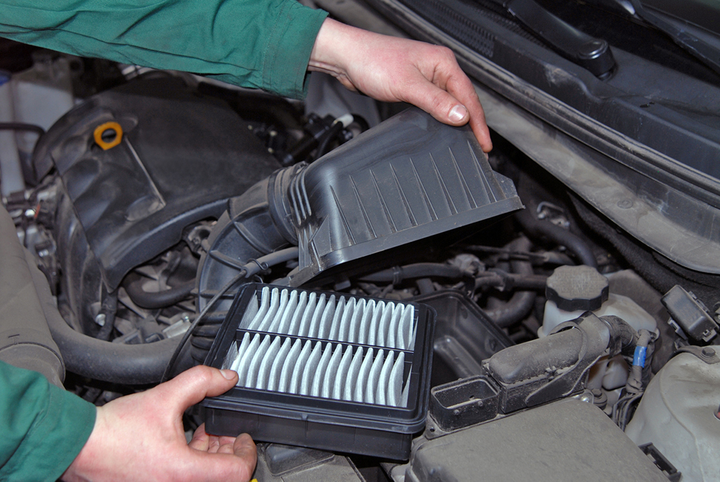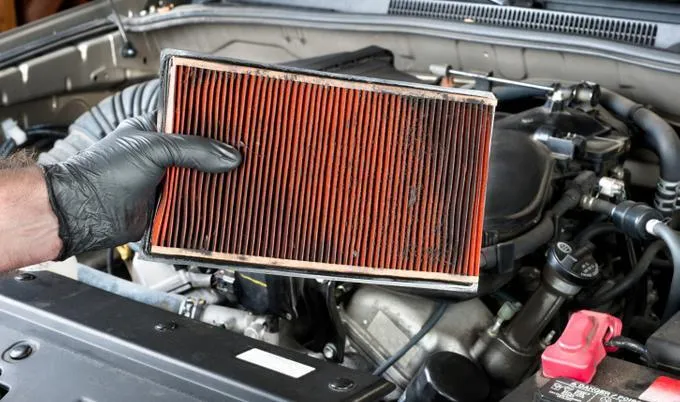


The cabin air filter is an essential component in a vehicle's heating, ventilation, and air conditioning (HVAC) system. Its primary function is to filter out pollutants, allergens, and other contaminants from the air entering the cabin, ensuring a clean and healthy environment for the
Over time, your cabin air filter becomes clogged with accumulated debris, rendering it less effective at trapping pollutants. This buildup not only allows unpleasant odors to seep into your cabin but also restricts airflow, leaving you feeling stuffy and uncomfortable, even with the fan cranked up to the max.

There are two main reasons why a cabin air filter can become dirty or clogged:
| Cause | Explanation |
|---|---|
| Accumulated Dust and Debris | Over time, dust, dirt, and other particles can accumulate on the filter, gradually clogging it and reducing its effectiveness. |
| Lack of Regular Maintenance | Most manufacturers recommend replacing the cabin air filter at specific intervals (e.g., every 12,000-30,000 miles or annually). Failing to follow these recommendations can lead to a dirty filter. |
So, how can you tell if your cabin air filter needs some TLC? Here are some common symptoms to watch out for:
If you've noticed a persistent, musty smell inside your car, even after thoroughly cleaning the interior, it's likely that your cabin air filter is struggling to trap odors effectively.
When the filter is clogged, it becomes increasingly difficult for air to pass through, resulting in weak or uneven airflow from your vents, even with the fan on high.
A dirty cabin air filter can impair the HVAC system's ability to dehumidify and defrost the windshield and windows, leading to foggy or frosted glass.
As the filter becomes more clogged, the blower motor has to work harder to push air through, often resulting in increased noise levels.
A severely clogged filter can strain the HVAC system, reducing its ability to heat or cool the cabin effectively.
If left unaddressed, a dirty cabin air filter can lead to several issues:
| Issue | Explanation |
|---|---|
| Poor Air Quality | A clogged filter can no longer trap pollutants effectively, allowing contaminants to circulate inside the cabin, potentially causing respiratory issues or discomfort. |
| Reduced HVAC Performance | A restricted airflow can decrease the efficiency of the heating, ventilation, and air conditioning (HVAC) system, leading to uneven temperatures and poor climate control. |
| Increased Wear on HVAC Components | The blower motor and other HVAC components may have to work harder to compensate for the restricted airflow, potentially leading to premature wear and failure. |
| Potential Mold Growth | Moisture trapped in a dirty filter can create an ideal environment for mold growth, further exacerbating air quality issues and potential health risks. |
Now, if you're experiencing any of these symptoms, fear not! Replacing the cabin air filter is a relatively straightforward task that even the most mechanically challenged individuals can tackle with a bit of guidance.

First things first, consult your trusty owner's manual or a repair guide to locate the cabin air filter in your specific vehicle. It's often tucked away behind the glove compartment or under the dashboard, but the exact location can vary.
Once you've found the filter, take a good look at it. If it's visibly caked with dirt, debris, or discoloration, it's time for a replacement. A new filter should appear clean and white, ready to breathe fresh life into your cabin.
Follow the instructions carefully to remove the old filter and clean the housing area thoroughly. This step is crucial to ensure no lingering debris can compromise the new filter's performance.
With the housing area prepped, it's time to install the new cabin air filter. Pay close attention to the airflow direction indicated by arrows on the filter, and slide it into place snugly.
Reassemble everything, and voilà! You've just given your cabin a breath of fresh air. Test the HVAC system to ensure proper airflow and operation.
While replacing the cabin air filter is a relatively simple task, prevention is always better than cure. Most manufacturers recommend changing the filter every 12,000 to 30,000 miles or annually, whichever comes first.
However, if you frequently drive in dusty or polluted environments, you may want to consider more frequent replacements to ensure optimal air quality and HVAC system performance.
| Driving Environment | Recommended Replacement Interval |
|---|---|
| Normal Conditions | Every 12,000-30,000 miles or annually |
| Dusty or Polluted Areas | More frequent replacements (e.g., every 6 months) |
Additionally, make use of the recirculation mode when driving through areas with heavy traffic or construction to minimize the intake of external contaminants.
Now, you might be wondering, "How much is this going to set me back?" Well, the good news is that cabin air filters are relatively inexpensive, typically ranging from $15 to $50, depending on your vehicle's make and model.
| Cost Component | Typical Range |
|---|---|
| Cabin Air Filter | $15 - $50 |
| Professional Labor (if applicable) | $30 - $100 |
If you're feeling handy, you can save on labor costs by tackling the replacement yourself, following the instructions carefully. However, if you'd rather leave it to the professionals, expect to pay an additional $30 to $100 for labor at a service center.
Either way, the cost of maintaining a clean cabin air filter is a small price to pay for the comfort and potential prevention of more costly HVAC system repairs down the line.
In the grand scheme of automotive maintenance, the cabin air filter might seem like a minor player. However, neglecting this unsung hero can lead to a host of unpleasant consequences, from musty odors and reduced airflow to potential HVAC system issues and even health risks.
So, do yourself (and your nostrils) a favor: keep an eye out for the telltale signs of a dirty cabin air filter, and don't hesitate to replace it when needed. Your future self (and passengers) will thank you for the fresh, comfortable ride.
Happy motoring, folks!
The cabin air filter traps contaminants like dust and pollen, allowing only fresh air into the vehicle's cabin. It helps maintain good air quality and airflow inside the car.
Most manufacturers recommend replacing the cabin air filter every 12,000 to 30,000 miles or annually, whichever comes first.
Common signs include musty odors, reduced airflow from vents, foggy windows, increased blower noise, and decreased heating/cooling efficiency.
Yes, a severely clogged filter can strain the HVAC system, potentially leading to reduced performance and premature wear on components.
The cabin air filter is typically located behind the glove compartment or under the dashboard, but the exact location varies by make and model.
No, replacing a cabin air filter is generally a straightforward DIY task for most vehicles if you follow the instructions carefully.
Cabin air filters are relatively inexpensive, typically ranging from $15 to $50, depending on the vehicle.
Yes, if you frequently drive in dusty or polluted environments, more frequent cabin air filter replacements (e.g., every 6 months) may be necessary.
The recirculation mode recirculates the cabin air instead of drawing in outside air. It should be used when driving through areas with heavy traffic or construction to minimize contaminant intake.
Yes, a severely clogged filter can allow contaminants and potentially mold to circulate inside the cabin, which may cause respiratory issues or discomfort for occupants.

Sarah isn't your average gearhead. With a double major in Mechanical Engineering and Automotive Technology, she dived straight into the world of car repair. After 15 years of turning wrenches at dealerships and independent shops, Sarah joined MICDOT to share her expertise and passion for making cars run like new. Her in-depth knowledge and knack for explaining complex issues in simple terms make her a valuable asset to our team.












